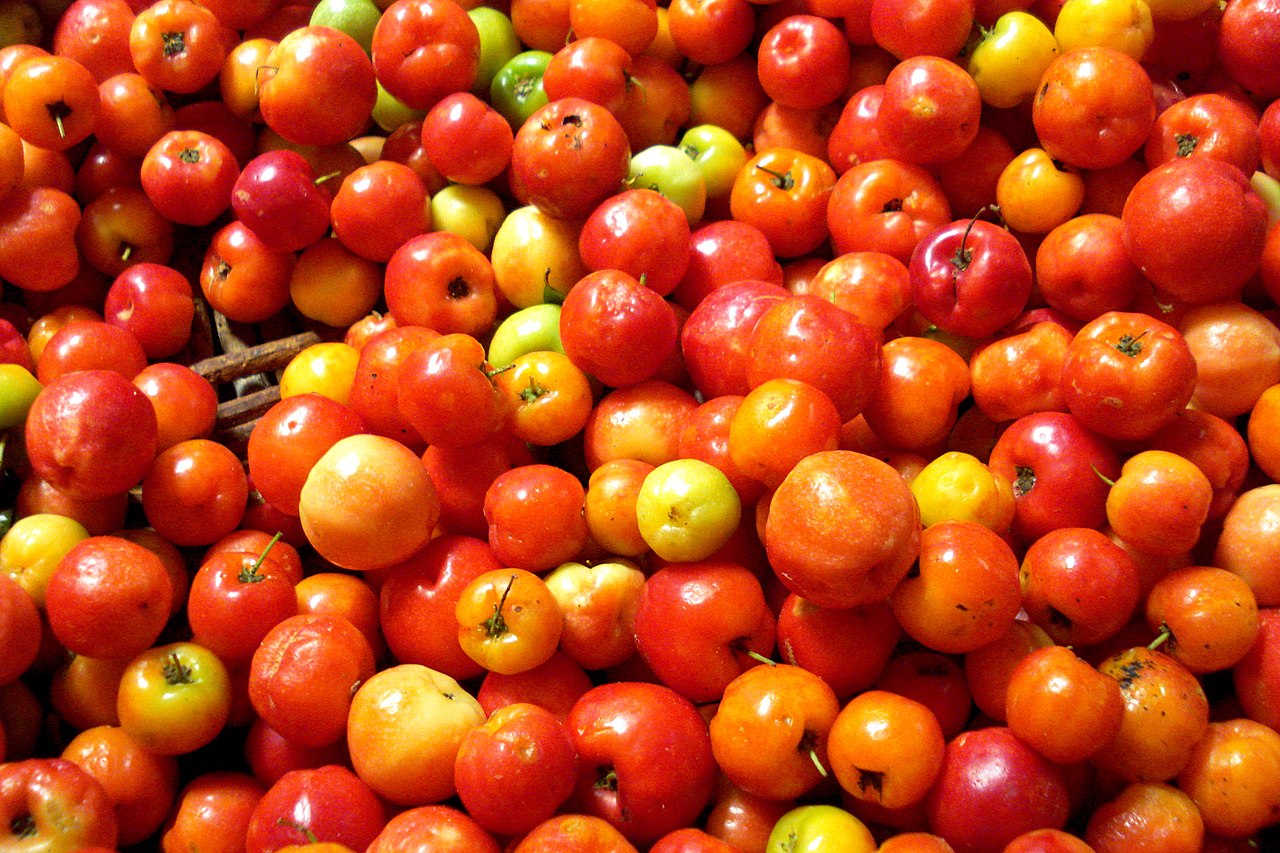Last Updated: 8 November 2022

Figure 1. The Acerola Cherry.
The Acerola Cherry is native to Paraguay, Brazil, Mexico, Puerto Rico, Dominican Republic and Haiti. Nowadays, the Acerola Cherry is also being grown as far north as Texas and in subtropical areas of Asia, such as India. The evergreen shrub of Acerola plant flourishes in warm and tropical climates, and it bears a small trilobite cherry-like fruit (see Figure 1).
The pulp of the fruit is renowned for as an exceptional source of Vitamin C; in fact, the Acerola Cherry is one of the richest natural sources of Vitamin C while simultaneously serving a plethora of phytonutrients such as carotenoids phenolics, anthocyanins, and flavonoids. In France, Germany and Hungary, the fruit is used largely in juice form, whereas in the United States it is used largely in supplement form.
The scientific name for Acerola Cherry is Malpighia emarginata. The fruit is also commonly called the Guarani Cherry, Barbados Cherry, and West Indian Cherry.
The Acerola Cherry is primarily made up of 91% water, 8% carbohydrates, and contains negligible protein and fat. The fruit provides an exceptional content of vitamin C at about 2000% (or 20x) the Daily Value per 100g. The fruit also provides manganese at 29% of Daily Value per 100g, among other micronutrients. Per 100g, The Acerola Cherry contains between 1500–4500mg of Vitamin C. This is around 50-100x the amount of Vitamin C provided by an orange or lemon in the same serving size.
Research has shown that the Acerola Cherry exhibits high antioxidant capacity and several interesting biofunctional properties including skin whitening effects, anti-aging effects, and multidrug resistant reversal activities due to its reservoir of phytonutrients.
View Acerola Cherry's complete nutrition table @ National Library of Medicine, U.S.
A range of biological activities has been demonstrated using different extracts of acerola and its phytonutrients, and the research is compiled in the table of biofunctional properties of Acerola Cherry. One of the most interesting studies conducted on the Acerola Cherry fruit showed the potential of the fruit to be used in possible cancer chemotherapy and cancer prevention applications (see Motohashi et. al. 2004).
View Acerola Cherry's table of biofunctional properties @ National Library of Medicine, U.S.
Sources and Citations:
* Please be advised: always seek medical consultation if you require medical help or attention. The contents of this Codex are for educational purposes and are not intended to offer personal medical advice.